Scientists and Journalists Aren’t on the Same Side, But They’re Often Heading in the Same Direction

What you’re getting into: about 3500 words, a 12–18 minute read
Scientists often assume that journalists are on their side when it comes to educating the public about scientific topics. That’s true for a lot of basic science, like, say, when journalists write about the discovery of a new exoplanet or explain the work of a scientist who just won a major prize. Those typically aren’t controversial topics, so scientists and journalists alike are simply trying their best to explain some cool science.
The second we start talking about anything perceived as controversial outside the lab, though, the rules of engagement can dramatically shift. It’s incredibly easy for scientists, science communicators and journalists to talk past one other when we’re dealing with topics like climate change, vaccines, evolution and genetic engineering, as well as science funding. And it can happen when journalists hold scientists and scientific institutions accountable, too.
The good news, I think, is that we can do better. And doing so requires being clearer about when we’re talking about science and when we’re talking about competing values and how science fits into societal debates.
Below, I offer a story, some observations and suggestions. I’d love to hear more.
Policy, politics and cultural coverage isn’t pure science coverage
I talked past a reporter pretty badly back in 2011. Members of Congress had invited several scientists to testify about whether or not the Environmental Protection Agency’s efforts to reduce heat-trapping emissions were justified. One member — a lawyer by training — used his time to pepper scientists with loaded questions while demanding simple yes or no answers, a standard tactic at such hearings. Of course, that’s anathema to any scientist.
Here’s how a major news outlet ended an article about the hearing:
Mr. Griffith also wanted to know why the ice caps on Mars were melting and why he had been taught 40 years ago in middle school that Earth was entering a cooling period.
“What is the optimum temperature for man?” he asked. “Have we looked at that? These are questions that, believe it or not, I lay awake at night trying to figure out.”
The scientists promised to provide written answers.
Like a lot of folks working on climate science communication at the time, I thought this was a problematic ending. To a reader unfamiliar with these issues, it could sound like these were mysterious questions for which science had no good answers. (Briefly, here are answers on Mars, 1970s climate science, and why rates of change are more worrisome than absolute temperature.)
I fired off an email to the reporter, arguing — quite well I thought — that his reporting was unfair to the scientists who testified and detrimental to public understanding of science.
He told me, in so many words, that edifying the public about Martian climate variance wasn’t the point of his article.
First of all, I hadn’t been the first person to contact him, so he felt like he was getting pressured (reporters hate that) and his reporting on the hearing was accurate. That was, in fact, what happened at the hearing and an informed reader, he argued, would know exactly where the politicians and scientists stood in relation to one another. Further, his story also focused on an exchange in which a representative made it clear that climate science — and risks from industrially driven climate change — were well-established in the scientific literature.
I realized that in his mind, my complaint wasn’t really about science; my complaint was that he hadn’t beaten up a member of Congress for giving scientists a hard time.
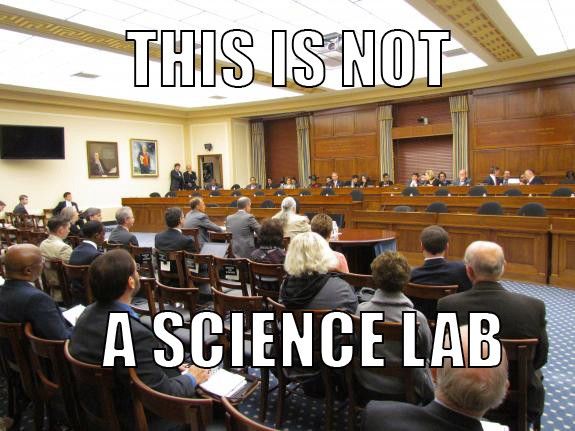
We also had different audiences in mind. My complaint was based on the assumption that the article’s audience would be otherwise uninformed about climate science or policy. He assumed that readers would be well-armed enough to draw their own conclusions.
Maybe I was right, but that and $3.25 will get you a Chai Latte at Starbucks. The point is that I was telling him to do science communication and he was reminding me that he was doing political reporting. In the ensuing years, I think journalists have done a better job reminding readers where climate science stands when politicians challenge or reject the evidence, but the exchange taught me a broader lesson: just because a story has a lot of science in it doesn’t mean it’s going to get treated like a science story.
Journalists and scientists are both committed to accuracy
Journalists and scientists do both care deeply about accuracy and credibility. It’s tempting to say that it’s because the noble ideals of both professions rest on uncovering the truth and boldly going where the facts lead, regardless of one’s beliefs or biases. And, yeah, okay that’s true, but the day-to-day is a lot more brass tacks: in both professions, credibility is currency and too many errors over time can sink a career.
Real errors are a problem, of course. And scientists and journalists are both sometimes guilty of intransigence when people point out errors in their work. Regardless, both professions benefit from the self-correcting nature of the larger enterprises around them. A bad story will get factchecked by other outlets in ways that are similar to how a bunktastic scientific paper will fail replication by other scientists.
The problem I’m writing about isn’t really about factual errors, though; it’s about what happens when science-related stories move out of the lab, into the world, and yes, into the political arena. We need to be careful about how we think and talk about accuracy in that context, because it’s easy to talk past each other based on assumptions about what audiences know and what role journalism is playing in a given debate.
This is important to get right because science is still the best tool we have for learning about the world and journalism is still the best tool we have for informing the public about what those scientific tools have uncovered.
Journalists and scientists have different audiences and jobs
Scientists care deeply about what policymakers and the public think about their fields, especially on issues that are perceived as controversial. When politicians and interest groups seek to highlight, inflate and manufacture controversies, scientists’ desire for accuracy often puts them in the position of wanting journalists to downplay or actively challenge those outside attempts at influencing the public and focus on what is well-established among scientists.
But when those same outside interests groups focus on controversies, it’s journalists’ job to report on them. Their commitment to fairness means bringing in all the stakeholders in a debate and reporting what they believe and why, even when it cuts against the science.
So sometimes, when scientists are demanding accurate reporting, what they’re really asking is for journalists to critically assess inaccurate views from outside the scientific community. Journalists can’t always do that, especially on deadline when they’re covering noisy policy fights. I’d argue that this often puts the onus — rightly or wrongly — on scientists to repeatedly make their views clear to journalists and media outlets. That means consistently reminding journalists what scientists have to say about these topics and why prevalent misinformation is wrong.
[caption id=”attachment_1099" align=”aligncenter” width=”331"]
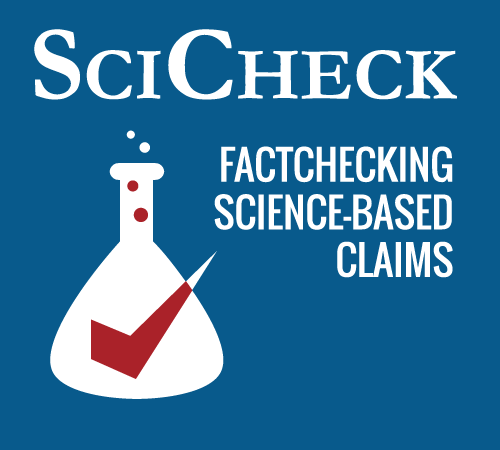
Arguing about whose side science is on has gotten so popular, Factcheck.org added a science feature in early 2015 specifically to grapple with scientific claims in the political sphere.[/caption]
Of course, journalists have a responsibility, too. They can’t pass on inaccurate information simply because there are quote marks around it. Journalism professor Jay Rosen, for instance, describes several ways reporters can handle political disputes about established climate science ranging from explaining the ideological roots of rejecting climate science to simply noting what the science does say in their own journalistic voice. Additionally, media outlets have a special responsibility to report on industry attempts to influence the public and policymaking, whether on climate change or toxic chemicals.
The bottom line is that scientists and science communicators shouldn’t conflate their disappointment with some media reporting with their deeper disappointment in a society that is often simply out of step with scientists on a host of topics. It’s journalists’ job to report on science-related societal controversies accurately, but it’s not journalists’ job to actively push the public toward established science. That also means that science communicators and scientists need to think more about how they can help journalists do effective, accurate reporting around contentious societal debates.
Journalists aren’t here to help anyone’s cause, including scientists’
There’s another type of complaint scientists often have with reporting on and around science: the story is going to be abused by people who want to attack the broader scientific field.
For instance, scientists understandably gripe about the “Darwin was wrong” trope that regularly pops up in biology reporting. In 2009, New Scientist even used it as the title for a cover story. Scientists bemoaned the choice, noting that creationists quickly hopped on the article as “evidence” that mainstream biology was in shambles.
Of course, anyone motivated enough to pick up a copy of New Scientist probably already has their mind made up about the theory of evolution, but scientists rightfully worry about how groups outside the scientific mainstream will use — and more often, abuse — reporting on scientific topics. It can happen with any scientific finding, even seemingly routine ones, on vaccination, industrial agriculture, dietary and nutrition choices, and anything anyone wants to pick a fight about for reasons that usually have nothing at all to do with actual science. Because scientists enjoy so much public trust, advocates always want to have science on their side, so they’ll comb through literature, trade reports, and science-related press releases and media coverage hunting for anything they can use (and dismissing what they can’t).
Ideally, media outlets should anticipate this sort of thing.
Here’s that New Scientist cover.
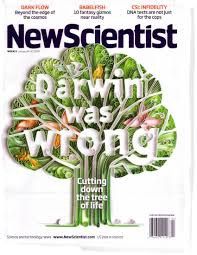
And here’s how National Geographic arguably handled it better with a clear message for people who bothered to crack the magazine open.
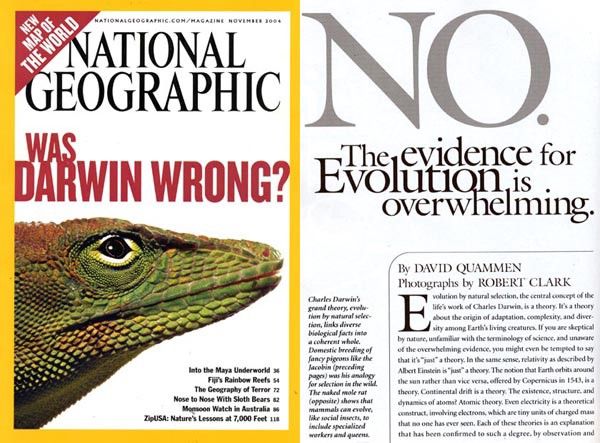
Of course, science communicators and scientists would probably much rather see something like this.
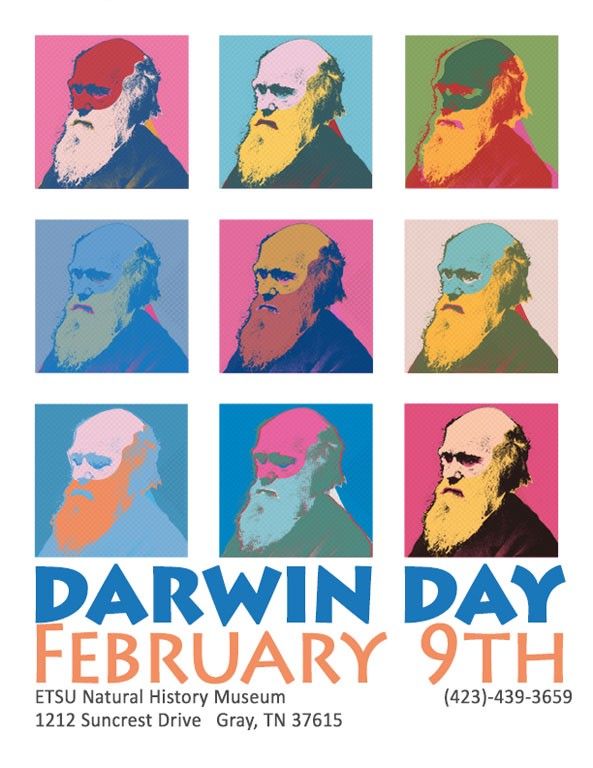
To which a science journalist might say: love the Warhol thing, but where’s the conflict for a good story?
Ice, Ice, Maybe
Scientists and journalists had to artfully deal with a rather odd combination of substance and perception recently when a NASA-sponsored study — by accounts, an outlier — found that Antarctica is gaining ice mass overall even as the West Antarctic ice sheet continues to melt, as sea levels continue to rise, and as global warming goes on broadly in line with what scientists have been saying about it for decades.
At first blush, the study’s findings are a head-turner that runs counter to the simple main message the public has heard from scientists for decades: global warming melts ice and raises sea levels pretty much everywhere. Of course, there are a lot of nuances under that statement, which scientists have talked about repeatedly, especially when it comes to the rate of melting and the geographic differences between places like Greenland and Antarctica, but at the headline level or broad public awareness, this was surprising news.
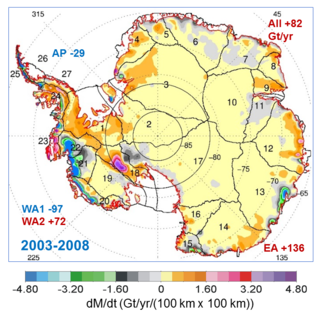
Predictably, ideological media outlets that routinely criticize mainstream climate science used the study to try to throw cold water on climate science. Here’s an opinion writer taking a fat, sloppy swing at it in the UK’s Express:
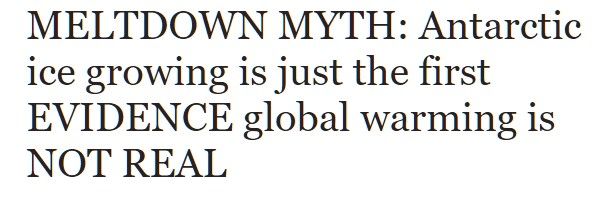
Nothing like ALL CAPS to make the CREDIBILITY OF YOUR ARGUMENT clear.
Some mainstream outlets jumped on it as a surprising study. From their perspective, it wasn’t their main job to beat the public over the head with the basic science on global warming and melting ice sheets or to correct what those ideological sources have said: it was their main job to report on a new and interesting “man bites dog” science story.
USA Today, with its incredibly broad audience, probably captured that reaction best:

Other journalists and outlets, notably Chris Mooney at the Washington Post went out of their way to put the study in deep scientific and policy context. They and their editors even used valuable headline space to address potential misinformation about the study, something that almost never happens when outlier studies get big coverage.

Andrew Freedman at Mashable took a similar approach in his reporting, while the headline took on the inaccurate narrative about the study directly.

Of course, Mooney and Frbeedman are well-versed beat reporters with arguably more engaged audiences. That’s the exception, not the norm, and the onus is still on scientists and scientific institutions to anticipate inaccurate takes on new research and plan their communications accordingly.
For it’s part, NASA’s social media account tried to squeeze as much nuance as it could into 140 characters:
Antarctica is overall accumulating ice, but parts have increased ice loss in last decades: https://t.co/j7x9idUdM8 pic.twitter.com/VMNbV1LB3m
— NASA (@NASA) October 30, 2015
Still the agency’s press release might have done more to emphasize what is known about long-term ice loss and sea-level rise globally. Interestingly, the study’s lead author was pretty blunt about how people outside the scientific community would misrepresent his research in an interview with Nature.
“I know some of the climate deniers will jump on this, and say this means we don’t have to worry as much as some people have been making out,” he says. “It should not take away from the concern about climate warming.” As global temperatures rise, Antarctica is expected to contribute more to sea-level rise, though when exactly that effect will kick in, and to what extent, remains unclear.
Such awareness is common among scientists working in controversial fields and they should be open about it, just as public health researchers devote plenty of time and thought to how their own studies are received. It’s all about helping audiences — and reporters — enjoy an accurate view of the science.
Journalists also have to hold scientists and institutions accountable
Buzzfeed’s Brooke Borel recently wrote about controversies surrounding biologist Kevin Folta and communications work he did related to GMOs, some of which was done in coordination with biotech companies running anti-labeling campaigns. Naturally, pro-and-anti GMO forces attempted to assign ideological positions to Borel’s article, but there was another thread of more interesting criticism (at least for me). Some scientists complained that the article would 1) provide more ammo for anti-GMO groups attacking Folta and other scientists and 2) discourage other researchers from doing science communication.
Borel’s response was straightforward and sensible. In a series of Twitter messages she wrote: “As science writers/journalists/etc, we hold a strange position sometimes. I love science. I admire scientists. But it’s also my job to think about both critically. My job as a science journalist is not to advocate for science and scientists at all times, no matter what.”
Indeed, scientists are often public figures who can and should face public criticism from time to time: many enjoy taxpayer support and they are often trusted, powerful figures in society. So even while scientists and science communicators rightfully condemn politicized attacks on researchers, they should also expect and even welcome journalistic scrutiny. Another journalist, Rose Eveleth, put it well, too:
When scientists get involved — or unwillingly find themselves involved — in public communication on controversial science-related issues, we’re not in the world of pure science reporting any more. In these debates, scientists are just one of many actors pushing for their voices to be heard above the democratic din.
Even science education and science funding choices aren’t purely about science. As climate scientist Gavin Schmidt has argued, any societal debate that involves science also involves value judgments.
Science gets inserted into these debates in perfectly accurate as well as questionable ways all the time. It can be tough for journalists and scientists to figure out how to best respond. But I think we can all do better.
A series of hopefully helpful, but not exhaustive suggestions
Far be it from me to pontificate about a host of complex problems without at least suggesting some solutions. Here are a few ideas for how scientists, journalists and media outlets, as well as press officers at scientific institutions can help address these issues. (I’d love to hear feedback and talk about additional ideas.)
For scientists
- Anticipate misunderstanding of your work — both intentional and not — and insist that public information officers and reporters anticipate it, too.
- Demand accuracy, but understand when journalists aren’t just reporting on the science.
- If you have a problem with a story, be direct, clear and forthright about it. Journalists are used to criticism and it’s easy for them to write you off as a hater if you come across as griping. (With exceptions for hacks and fabulists, of course.)
- If you think a piece was missing context, but wasn’t expressly inaccurate, ask for an update, a chance to do a guest post (if possible, depending on the outlet), or just blog about it on your own.
- If a reporter won’t correct a real error and you think it’s important enough, you can go over their heads to an editor or, if that doesn’t work, call them out online, but before you do that, ask someone with an outside perspective, preferably a press officer at your institution or a fellow scientist with lots of media experience, how strong your case really is. Ask them to think about it purely on the merits — as if they were reading about it online instead of chatting with someone they known and respect.
For journalists (and media outlets)
- Build and link to explainers on controversial topics so audiences who are new to an issue or need a refresher can go back to that content when something new breaks. You have no idea how much scientists would love to see this and well-done explainers are often evergreen traffic sources. It’s also a great way to not have to reinvent the wheel when a new controversy erupts.
- Understand the prevalent misinformation around a scientific topic and anticipate how scientists will see work as feeding into or pushing back against it. If you’re relatively new to a topic, ask scientists you’re interviewing what sort of inaccuracies they would want you to avoid in reporting. They’ll have plenty to share, believe me.
- If you a know a piece will be received as controversial, take a look at how Brooke Borel quickly, openly and non-defensively responded to such criticism. Do that. Your storytelling is incomplete without responding to your audience.
- Be open with scientists about what you’re looking for and where their work fits in, especially if it’s a controversial topic. Scientists worry a lot about their media coverage and much of that anxiety can come from unnecessarily fearing the worst.
- If a scientist perceives missing context outside of pure scientific facts as a type of error, explain the distinctions as you see them and consider offering to update the story with more commentary from the scientist or about the science. It’s painless and can enhance the story.
- You can and will tick off scientists even if your work is accurate. The mere act of not using jargon and keeping things short can create explanatory gaps from a scientist’s perspective. Give them a break. If you get a critical email from a scientist, use it as an excuse to help them understand your work. If they’re still grumpy, offer to buy them a coffee or beer.
- Similarly, if an editor tells you to oversimplify some cool, complex topic you discussed with a scientist, stand up to that editor and stand up for your audience. I’m a big believer that people who are wiling to read entire stories are also wiling to understand and think about them, too. (Yeah, I know, I’m an optimist.)
For institutions and press officers
- Don’t over-hype outlier findings, especially on controversial topics. Yeah, I know, this is tough one, but that’s why it’s important to give scientists the last-right-of-review on press materials. A university press officer looking to get attention for a study will often present it as “overturning” mainstream findings, for instance, and everyone involved should know that that usually leads to inaccurate reporting.
- If a scientist seems worried about how some of their work will be received, listen. Pause. Tell your boss that the story is complex and needs to be handled carefully. Meet with the researchers and talk through some if-then scenarios you might run into when you release their new study.
- If a scientist produces an outlier finding, point back to the mainstream science in the headline, subheadline and first paragraph of a press release. It’s hard to mistakenly overemphasize what is well-established. Figure out the 140-character version of the accurate takeaway for social media, too.
- Non-jerkishly, but aggressively follow up on scientists’ behalf to correct inaccuracies. You’re allowed to be the bad cop sometimes. As Randy Olson has argued, if science communicators were 10 percent as aggressive as Hollywood publicists, mainstream reporting on scientific topics would be a lot more accurate.
A few additional thoughts based on some feedback from Lexi Shultz, director of public affairs at the American Geophysical Union (and a former colleague):
- For scientists: Don’t disengage and don’t let the fear of being misunderstood prevent you from trying to communicate. The long-term benefits of working with the media outweigh any drawbacks you might see over the course of your career. I’d add that it’s up to scientists to tell their own stories, otherwise other people will tell those stories without them.
- Scientific societies are also a great resource for members interested in sharing their work. For it’s part, AGU has launched a whole new “Sharing Science” initiative well worth checking out, especially if you’re into the geosciences.
- Societies are also a solid resource for journalists who want to connect with independent scientific experts on literally every scientific topic.
On climate specifically, the University Corporation for Atmospheric Research curated a lot of great resources as part of their Climate Voices initiative. If you’re interested in helping audiences sort through how their values relate to scientific findings, I strongly recommend this presentation by Jeff Kiehl, who not only has degrees in natural science, but who is also a licensed analyst. (Pretty cool, huh!)




